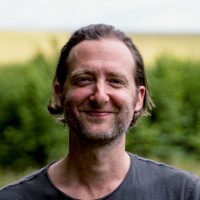Foxholes: The Simple, Brilliant Reforestation Method You’ve Probably Never Heard Of 🌳
In Madagascar, Ecosia and The Phoenix Conservancy are restoring forests using a method called 'foxholes' and it doesn’t involve planting saplings.
It immediately reminded me of half-moon Earth bunds. Simple, effective and surprisingly powerful.
Instead of raising delicate nursery saplings and hoping they survive in harsh conditions, foxholes mimic how forests regenerate naturally.
Seeds are scattered into shallow basins, where they compete naturally for light, water and nutrients, just as they would in the wild.
The results?
⤷ 30x more trees
⤷ 2x the plant diversity
⤷ 30% lower cost than traditional tree planting
This technique rebuilds ecosystems, supports local livelihoods and creates space for endangered species like the ring-tailed lemur to return.
Foxholes build on restoration techniques developed in Central and South America, especially ‘applied nucleation’, which is the practice of planting small patches of forest to kickstart natural regeneration.
And while the method isn’t new, Ecosia is helping it scale, connecting partners across continents, from Madagascar to Brazil.
Effective restoration doesn’t need to be high-tech or high-cost.
Sometimes, all it takes is a shallow hole and a deeper understanding of nature.
One rooted in the same wisdom that has guided indigenous land stewards for generations: work with nature, not against it.
#NatureRestoration #Rewilding #TreePlanting #Biodiversity #Conservation
🎞️ Ecosia
In Madagascar, Ecosia and The Phoenix Conservancy are restoring forests using a method called 'foxholes' and it doesn’t involve planting saplings.
It immediately reminded me of half-moon Earth bunds. Simple, effective and surprisingly powerful.
Instead of raising delicate nursery saplings and hoping they survive in harsh conditions, foxholes mimic how forests regenerate naturally.
Seeds are scattered into shallow basins, where they compete naturally for light, water and nutrients, just as they would in the wild.
The results?
⤷ 30x more trees
⤷ 2x the plant diversity
⤷ 30% lower cost than traditional tree planting
This technique rebuilds ecosystems, supports local livelihoods and creates space for endangered species like the ring-tailed lemur to return.
Foxholes build on restoration techniques developed in Central and South America, especially ‘applied nucleation’, which is the practice of planting small patches of forest to kickstart natural regeneration.
And while the method isn’t new, Ecosia is helping it scale, connecting partners across continents, from Madagascar to Brazil.
Effective restoration doesn’t need to be high-tech or high-cost.
Sometimes, all it takes is a shallow hole and a deeper understanding of nature.
One rooted in the same wisdom that has guided indigenous land stewards for generations: work with nature, not against it.
#NatureRestoration #Rewilding #TreePlanting #Biodiversity #Conservation
🎞️ Ecosia

